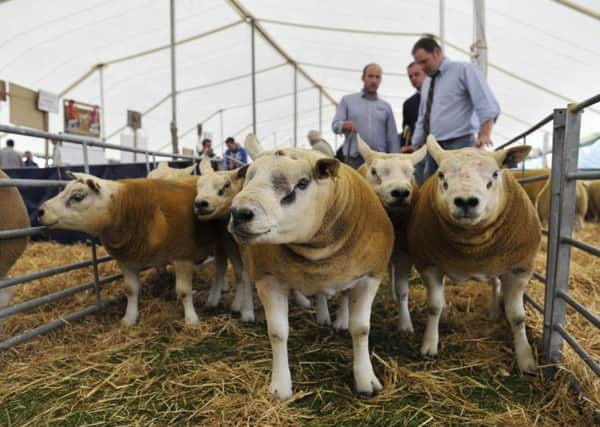Numbers are up as Kelso prepares for largest ram sales
This article contains affiliate links. We may earn a small commission on items purchased through this article, but that does not affect our editorial judgement.


With entries up by 266 on last year, the organisers said that the event played a key role in maintaining and promoting the strength of the UK sheep industry.
• READ MORE: Farming news
“The rams will be sold in 16 rings by seven different auction companies,” said Border Union Agricultural Society secretary Ron Wilson.
Advertisement
Hide AdAdvertisement
Hide AdHe said that the recent improvements in the sheep trade augured well for the consignors at what was the 180th sale to take place at Kelso – adding that hopes were high that the £3 million-worth of sales achieved last year might be bettered.
The event, which draws sellers from all over the UK, has attracted entries from the length and breadth of the country, including a number of consignors from Northern Ireland.
Wilson said that estimated 10,000 buyers came from even further afield, including several EU countries.
“As in 2016 the Texel is the most numerous breed, with 1,928 entries, followed by the Suffolks with 1,113 entries,” he said.
“Bluefaced Leicesters are up, with 643 entries, as are Beltex with 265; Charollais and Lleyn down slightly with 271 and 112 respectively, with a rise in the Crosses to 794 from 661 in 2016.
“Other entries are Border Leicester with 81, North Country Cheviot with 56, Blue Texels with 40, Berrichon with 37, Dutch Texels with 21, Hampshire Downs with 18, Poll Dorset with 11, Vendeen with ten, Roussin with six and Oxford Down with five.”
The first sale, which took place in 1836, saw 120 Cheviot and Border Leicesters sold for between £3 and £4 each – a figure which can be compared with last year’s average of over £600.
Advertisement
Hide AdAdvertisement
Hide AdThe sale will take place at the end of a week which is seeing a nationwide push to get consumers to eat more lamb.
Backed by all sectors of the industry, the week-long “Love Lamb” campaign will focus on raising awareness of how simple and quick it is to make family meals with home-produced lamb.
And the high-impact “Wham Bam Lamb” campaign run by Quality Meat Scotland, which uses radio, billboards, magazine articles, social media and store promotions to market the meat, was also launched this week.
Against a background of a decline in consumption of lamb, last autumn’s campaign saw the value of identified Scottish-origin lamb sales increase by 10.5 per cent.
However, while the most recent official statistics show that imports of foreign lamb were down – and exports of UK-bred lamb were up – they also reveal that, in the 12 months to July, retail consumption of lamb had fallen by 11.5 per cent to 69,206 tonnes.
Commenting on the promotion, John Fyall, chairman of the National Sheep Association in Scotland, said: “We want to highlight how Scotch Lamb fits in with modern living. There is no farmed animal in the UK that lives a more natural life than sheep; it’s in season just now straight off lush summer pastures.”
Record figures for dairy scheme
If encouraging dairy farmers to become involved in milk recording in order to improve their efficiency levels was the aim of last year’s EU emergency milk fund, then the initiative has been a huge success, it was claimed yesterday.
Advertisement
Hide AdAdvertisement
Hide AdThe Scottish Dairy Cattle Association (SDCA), which collates information on the industry, revealed that an additional 168 milk producers had signed up to have their herd recorded through the schemes run by the Cattle Information Service and the National Milk Records group.
The SDCA said this meant the performance of 93.4 per cent of the country’s milking cows was now officially recorded – the highest figure on record.
Jack Lawson of the SDCA said: “This is a great result for the industry and while we are aware that not all will continue to milk record once the EU funding finishes, some of the new herds are already stepping up their game by recording more frequently when they realise the immediate benefits such as identifying high cell count cows or cows producing low quality milk, both of which lower milk income.”
He added: “There are so many other benefits which await them such as disease or pregnancy testing via the milk sample,” added Lawson, who said that major milk buyers had also welcomed the move, with many now insisting that herds were milk recorded in order to ensure the sort of high quality product for which they were happy to pay more to the farmer.
“The field staff of both recording companies deserve the highest praise as taking on all the individual cow details for 168 farms is a huge amount of work but it is great for the future of our industry.”